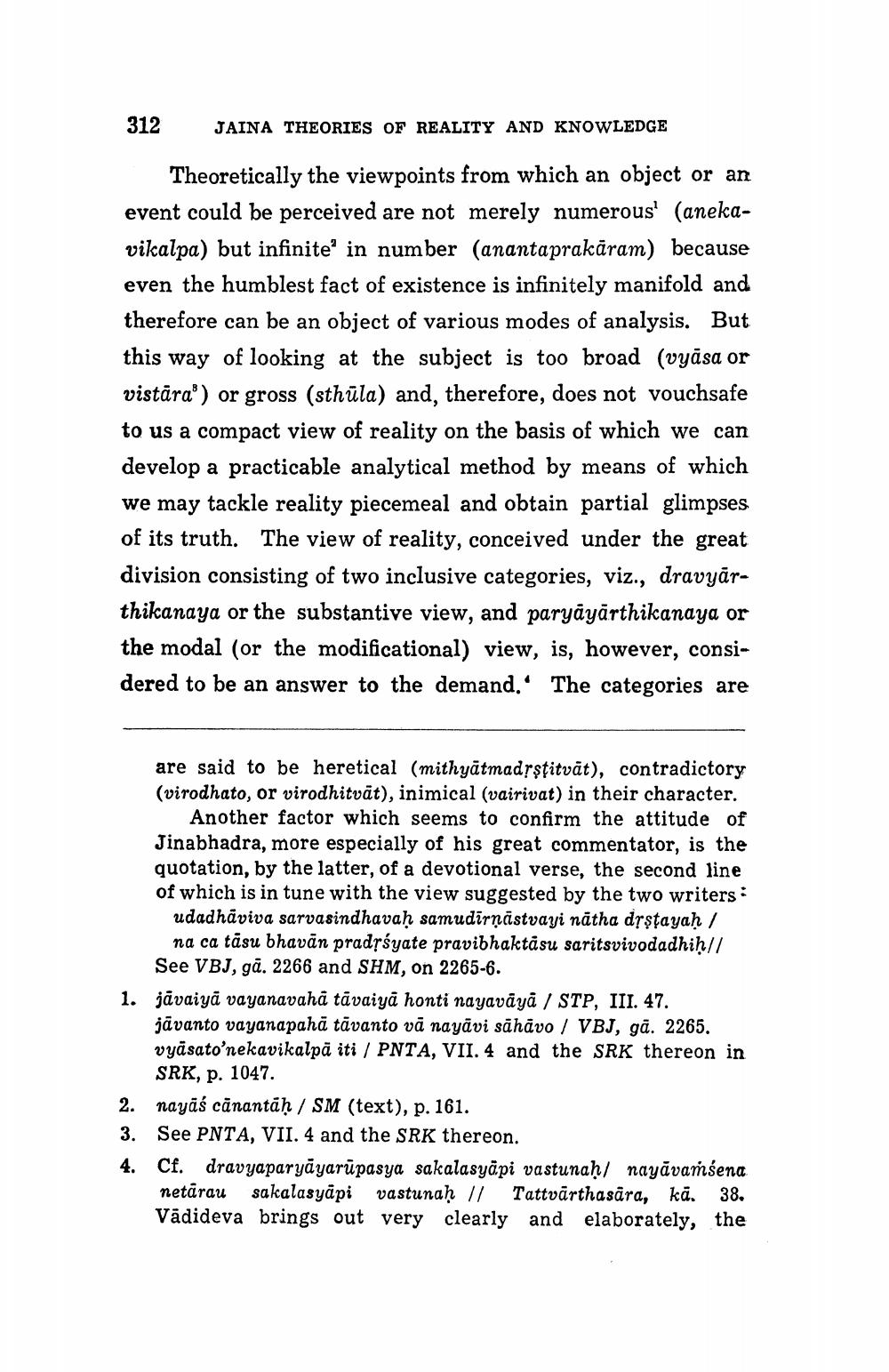________________
312
JAINA THEORIES OF REALITY AND KNOWLEDGE
Theoretically the viewpoints from which an object or an event could be perceived are not merely numerous' (anekavikalpa) but infinite' in number (anantaprakāram) because even the humblest fact of existence is infinitely manifold and therefore can be an object of various modes of analysis. But this way of looking at the subject is too broad (vyāsa or vistāra) or gross (sthula) and, therefore, does not vouchsafe to us a compact view of reality on the basis of which we can develop a practicable analytical method by means of which we may tackle reality piecemeal and obtain partial glimpses of its truth. The view of reality, conceived under the great division consisting of two inclusive categories, viz., dravyārthikanaya or the substantive view, and paryayarthikanaya or the modal (or the modificational) view, is, however, considered to be an answer to the demand. The categories are
•
are said to be heretical (mithyatmadṛṣṭitvät), contradictory (virodhato, or virodhitvät), inimical (vairivat) in their character.
Another factor which seems to confirm the attitude of Jinabhadra, more especially of his great commentator, is the quotation, by the latter, of a devotional verse, the second line of which is in tune with the view suggested by the two writers udadhaviva sarvasindhavaḥ samudīrṇāstvayi nätha dṛṣṭayaḥ/ na ca tāsu bhavan pradṛśyate pravibhaktāsu saritsvivodadhiḥ// See VBJ, gā. 2266 and SHM, on 2265-6.
1. jāvaiya vayanavahä tavaiya honti nayavāyā / STP, III. 47. javanto vayanapahā tāvanto vā nayāvi sähāvo / VBJ, gā. 2265. vyāsato'nekavikalpā iti / PNTA, VII. 4 and the SRK thereon in SRK, p. 1047.
2. nayaś canantaḥ / SM (text), p. 161.
3. See PNTA, VII. 4 and the SRK thereon.
4. Cf. dravyaparyayarūpasya sakalasyäpi vastunaḥ/ nayāvamsena netārau sakalasyapi vastunaḥ // Tattvärthasara, kā. 38. Vadideva brings out very clearly and elaborately, the




